Invest in ETFs Australia – Investing in ETFs Beginner’s Guide 2021
Please note that we are not authorised to provide any investment advice. The content on this page is for information purposes only.
Please note that we are not authorised to provide any investment advice. The content on this page is for information purposes only.
Looking to invest in ETFs (Exchange Traded Funds)? Based in Australia? Unsure of how to get started with ETFs? No problem.
ETFs offer low-cost, low-risk investing. No investment is risk-free. But, because ETFs invest in many stocks at once, they spread risk. What’s more, compared to mutual funds, ETFs feature low running costs, and these savings are passed onto investors.
Below we review three reputable brokers which allow you to invest in ETFs Australia and get a foot in the door with ETFs. We look at how ETFs work, which types might suit you and what risks are involved. We wrap up with a recommendation for Best ETF Broker for beginners.
Table of Contents
To invest in an ETF, follow this simple four-step strategy:
Investing from Australia? If so, your first consideration needs to be whether a broker will take your business. To invest in an ETF, you need to use an online broker. Unless you happen to have your own investment manager, there is no other way of doing it.
Australia benefits from having the fifth-most traded currency in the world (AUD), as well as investment regulation that is sensible without being a brake on opportunity. But not all brokers are allowed to take Australian clients and Australian dollars. The three brokers we review below — eToro, AvaTrade and Capital.com — do.
There are two ways to invest in ETFs:
The good news is that, with eToro, you can get the best of both worlds. You can buy into ETFs conventionally – as well as use CFDs (if you want) to go short and leverage your investing. That’s one reason why we rank eToro as Best Overall ETF Broker.
1. eToro – Overall Best Broker to Invest in ETFs Australia
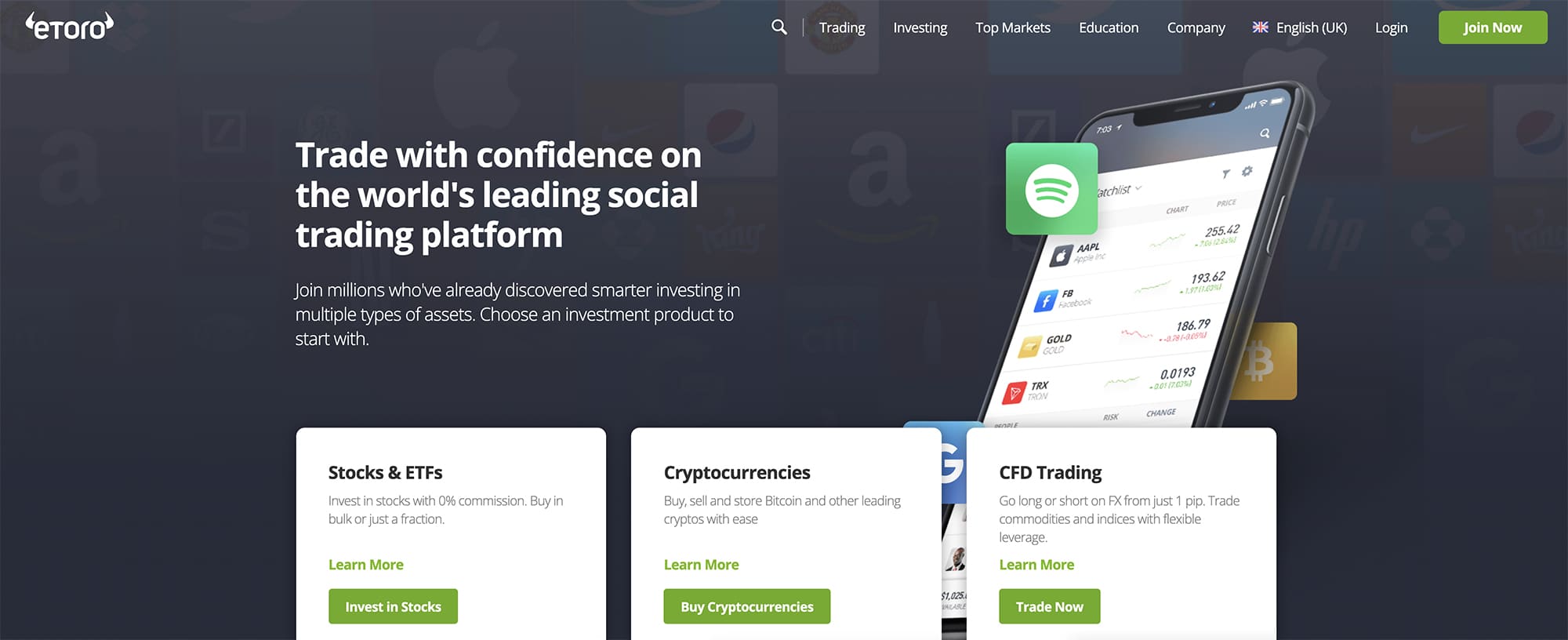
eToro serves 20 million investors in 120 countries. Since its inception in 2006, the broker has gained a reputation as a great place for beginners to invest. A massive bonus is the eToro interface, which is not daunting in the slightest, and easy to get the hang of quickly. Trades are commission-free — with any other fees clearly laid out. There are plenty of investment options across stocks, commodities, crypto, indices and ETFs. The eToro online help system is comprehensive and well-conceived.
eToro accepts Australian dollars (AUD) via bank transfer, credit card and PayPal.
Trade eToro ETFs
eToro offers 250+ ETFs including index ETFs, real estate ETFs, leveraged ETFs, inverse ETFs, bond ETFs, and commodity ETFs.

To find ETFs on eToro, you can either search by name, or browse.
To search for eToro ETFs by name
To search by name, enter the name or ticker of the ETF in the top toolbar. Below we have searched with the ticker ‘SPY’. The SPDR S&P 500 ETF (SPY) is the the first ever ETF to come to market (in 1993), and very popular. That is because SPY tracks the US S&P 500 index, which includes 500 giant US companies and is widely seen as the premiere index for the health of the US economy. SPY currently has $386 billion USD under management and boasts an average annual return of 10% since its creation.

SPY has almost 1.4m followers on eToro. Over 4% of eToro investors hold a position on it, with 99% buying rather than selling.
For the beginner, SPY is a good example of why ETFs are so popular as low-risk investments. With massive holdings in 500 top US companies, the ETF is literally 500 times safer than investing a single stock. If one of the giants in the S&P Index were to crash in value — which is unlikely — there are 499 other well-established companies to keep your own investment steady.
It is worth noting that SPY offers a very low expense ratio of 0.09%. Expense ratios are how you evaluate whether an ETF is costing a lot to run, remembering that those costs are passed on invisibly to investors. With an expense ratio of 0.09%, investors in SPY have to pay $0.9 for every $1000 invested. This fee is deducted at source as part of every transaction. You do not therefore have to worry that you will be hit by ETF expenses as a fee. But you should keep an eye out for expense ratios nonetheless.
The new bitcoin ETFs coming onto the market feature expense ratios around the 1% mark. Clean energy ETFs tend to offer expense ratios around the 0.7% mark. Many stock market index ETFs (like SPY), however, offer much lower expense ratios than sector indices.
To browse eToro ETFs
Click this button on your left toolbar:

This will bring up, in the middle of the screen, this toolbar:

Click on ‘ETFs’. You will then see a list of 250+ ETFs. The top of the list looks like this:
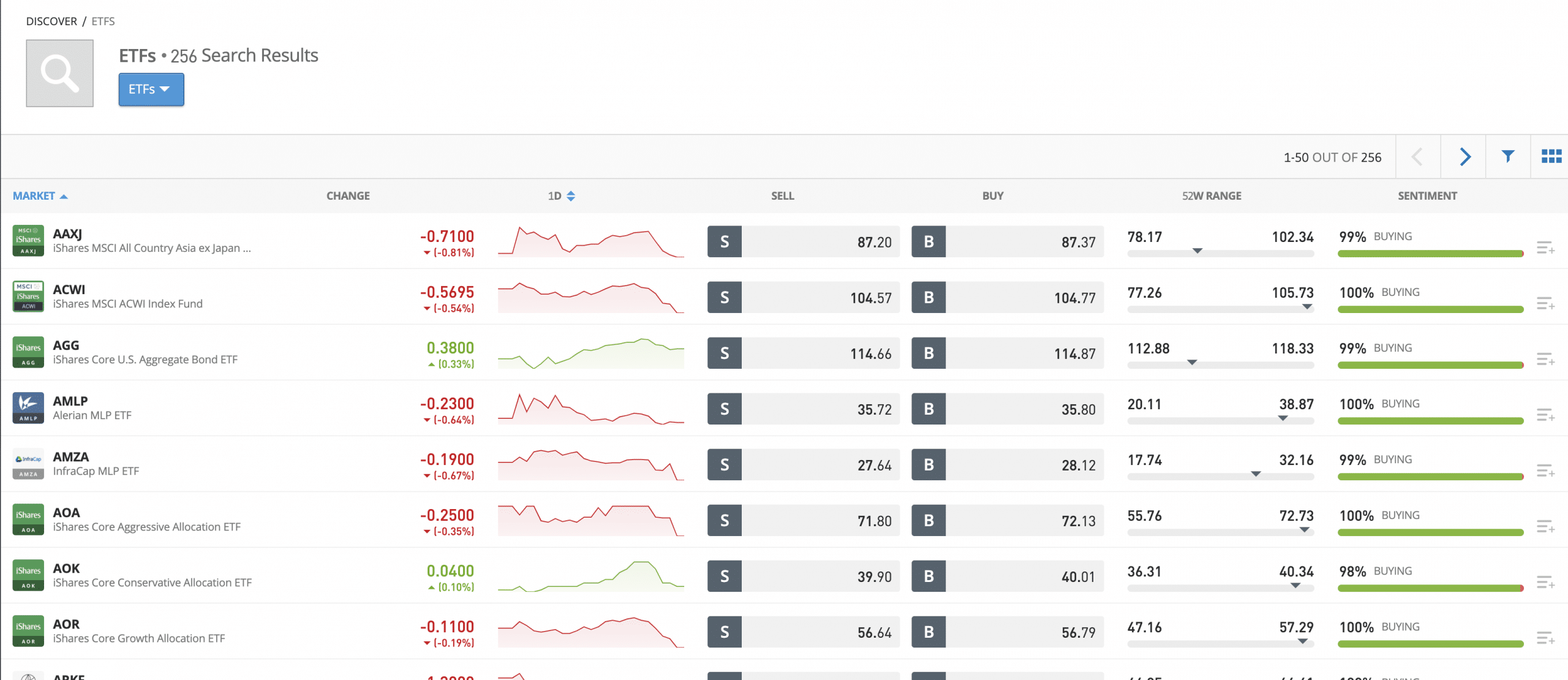
From left to right, you can see the logo and name of the ETF, its current daily change in value, its price chart (the time span of which you can change), its current Sell (S) and Buy (B) prices, its 52 week range, and eToro market sentiment on the ETF.
Press on the name of the ETF to bring up its home page.
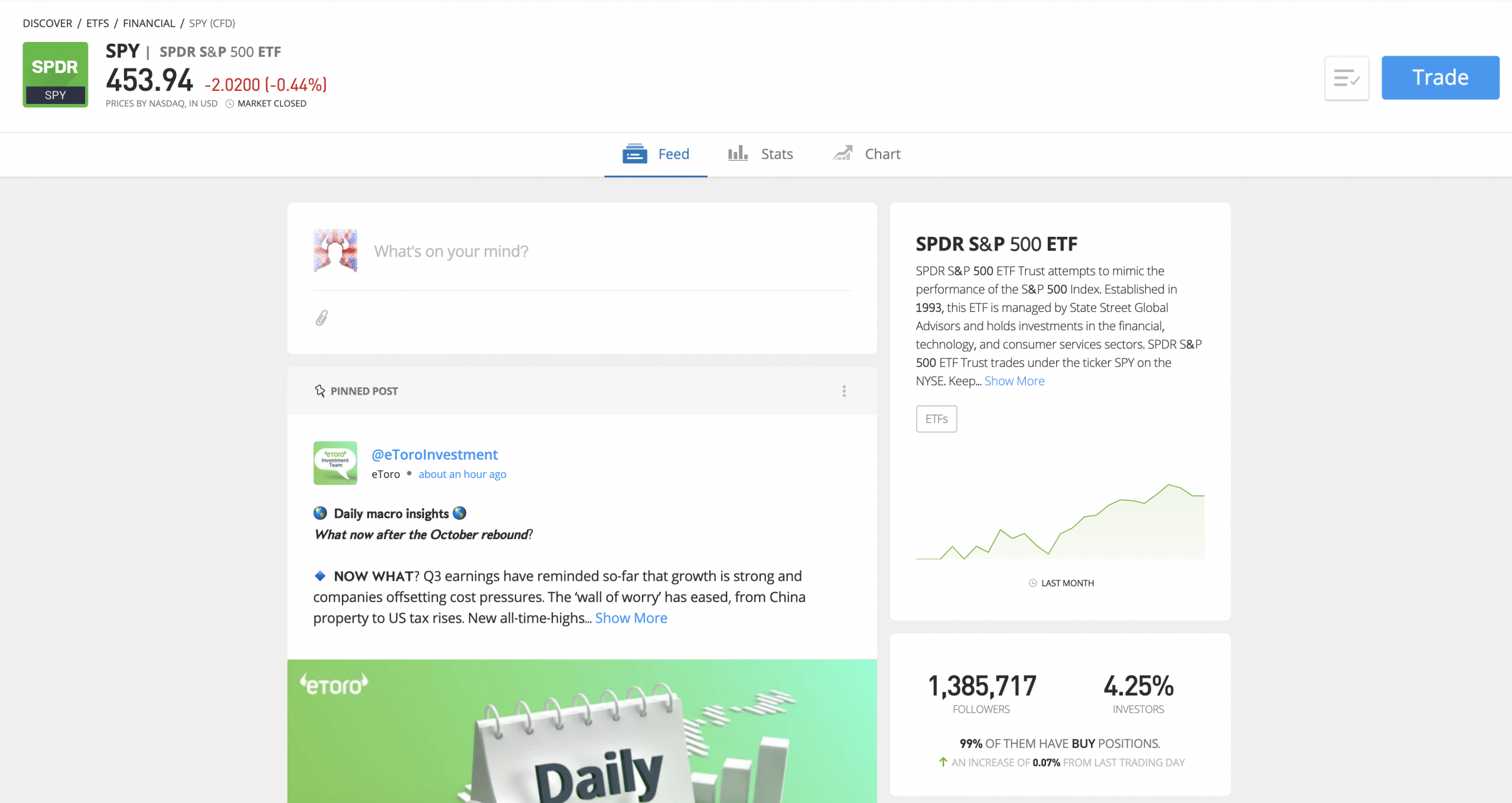
Click on the ‘Trade’ button to bring up your investment options:
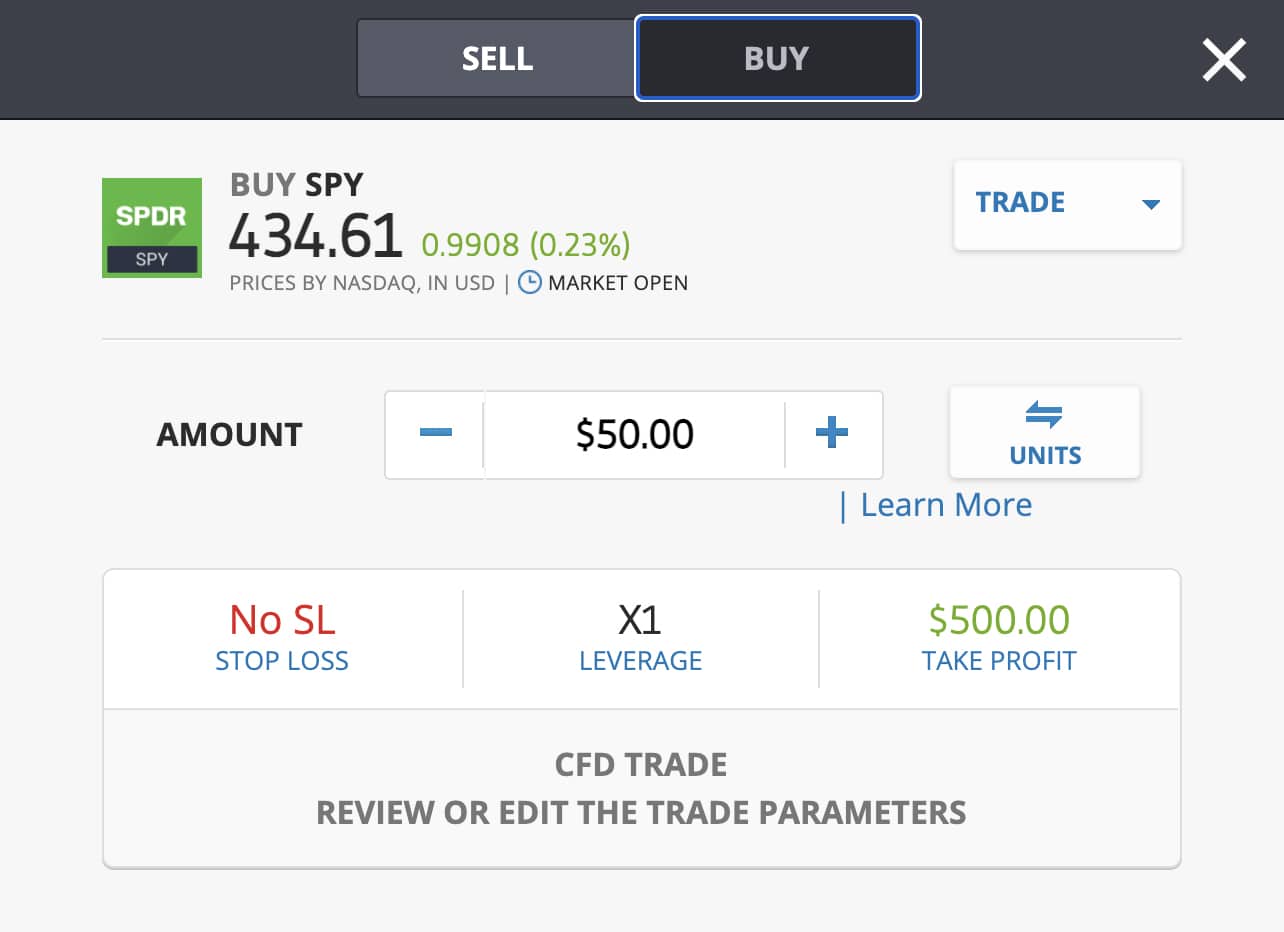
Note that in the image above, the ETF is being offered as a CFD trade. This is because US ETFs are only available to UK and European investors with eToro as CFD trades. Technically, this means the investor does not get to own the underlying stock, but rather exposes their portfolio to changes in its price. eToro charges a 0.09% fee on CFD transactions on ETFs.
Investors from any country can use a CFD trade with eToro to go short on an ETF, or leverage the investment. As you can see from the image above, you can set a stop loss to pull out of the trade when the price hits a certain point. You can also set a point at which to take profit by closing the trade automatically.
eToro Copytrader
eToro offers its own copy trading facility called CopyTrader. This is aimed at beginners, and is easy and free to use.
The idea of copy trading in general is to copy the trades of successful investors. These copied investors are called ‘signal providers’. eToro provides lists of signal providers which you can copy. You can review them by risk rating as well as by the performance of their portfolio.

You can invest in signal providers by allocating the amount of funds you want to invest in them – and eToro will do the rest. Your funds will be used to match the trades of your chosen signal provider in real-time. You can set stop losses, as well as cease copying at any time.
eToro also offers a collection of dynamic portfolios you can buy into. These are called CopyPortfolios. The idea is the same as for CopyTrader, except that you copy trades in a particular sector rather than trades by a particular trader. Investing in a CopyPortfolio does not involve a sign-up fee or commission.
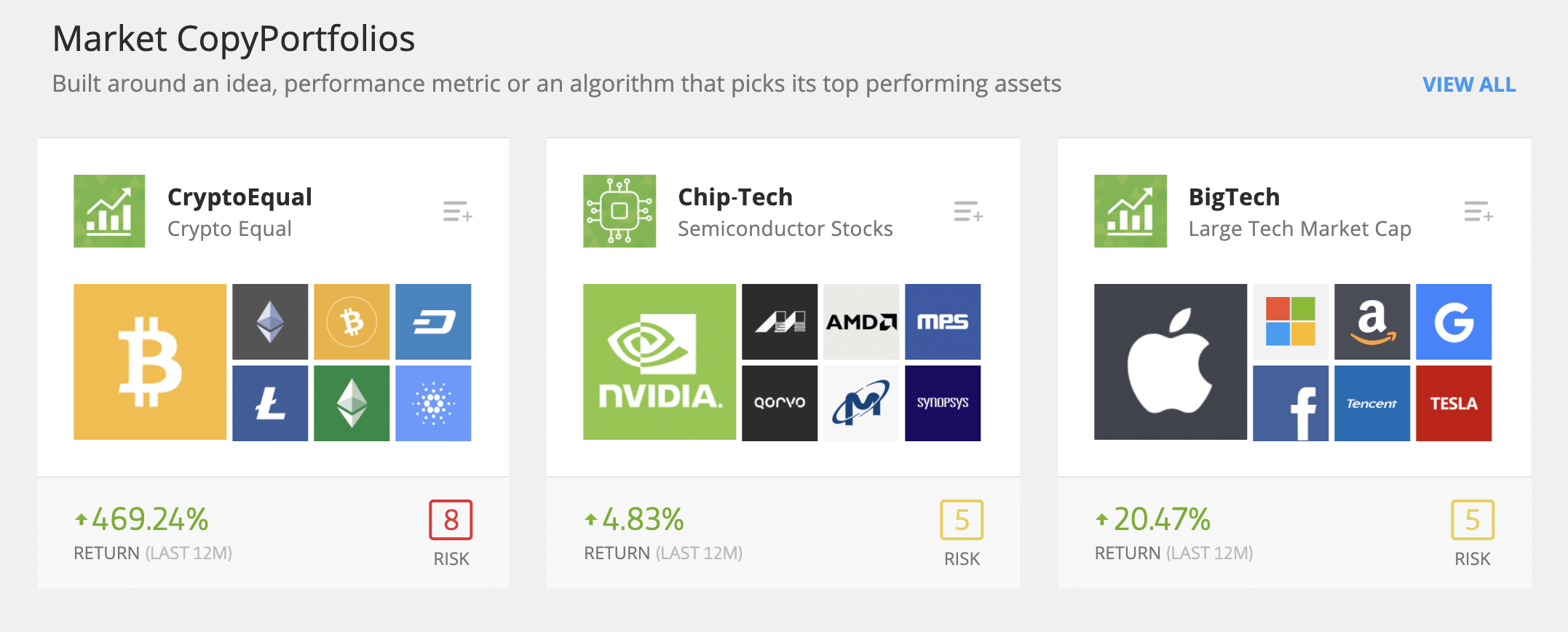
In Australia, eToro is regulated by the Australian Securities and Investments Commission (ASIC). In Cyprus, regulation comes under the Cyprus Securities & Exchange Commission (CySEC). In the UK, eToro comes under FCA regulation.
Like all brokers, eToro charges a spread on transactions. That means the price you buy at will be slightly higher than the list price, and the price you sell at will be slightly lower than the list price. In the image below you can see the spread for the SPDR S&P 500 ETF (SPY).

The buy price (B) is 457.86. The sell price (S) is 457.03.
The spread = B (457.86) minus S (457.03) = 0.83.
The spread percentage fee = (the spread divided by B) x 100 = 0.18%.
You need to be aware of the spread. That is because, in this example, the price has to move by at least 0.18% for you to make a profit.
This is a very low (and therefore cheap) spread because SPY is heavily-traded as the most popular ETF out of all 7500+ ETFs globally available. Different spreads apply to different ETFs.
| Fee Type | Fee Amount |
| Commission Fee | 0% |
| Deposit Fee | $0 |
| Withdrawal Fee | $5 |
| Inactivity Fee | $10 monthly fee applies after 1 year of inactivity |
| ETF | $0 – except for CFD ETF transactions, in which case a 0.09% spread fee applies |
Pros
Cons
67% of retail investor accounts lose money when trading CFDs with this provider.
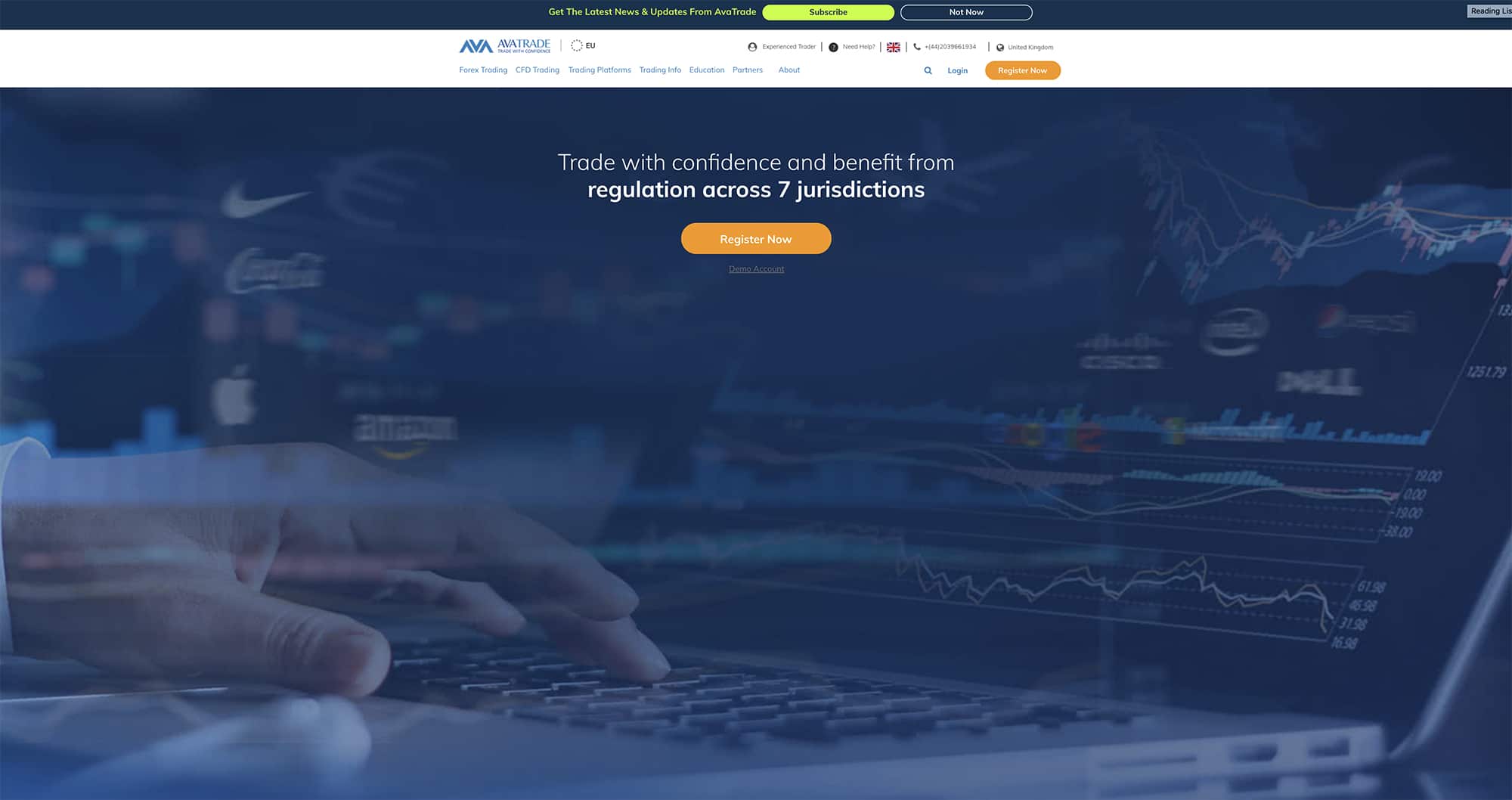
AvaTrade is a reputable CFD broker founded in 2006. The broker is regulated in no less than 7 global jurisdictions. AvaTrade has a good reputation for offering multiple trading platforms like MT4/MT5, DupliTrade and ZuluTrade.
AvaTrade services Australian clients and accepts AUD. When it comes to ETFs, there are 60 on offer that you can trade as CFDs. CFDs bring the powerful advantage of being able to go short on ETFs as well as leverage your trade.
With AvaTrade, your account will be a margin account and leverage trades are set at a certain level. Beginners might want to test their ETF investing skills with eToro first, before dipping into powerful CFD options with AvaTrade.
AvaTrade offers 60+ ETFs to be traded via CFDs. A good selection of stock market index ETFs are available. With AvaTrade, CFDs allow you to go short on ETFs as well as leverage. Note that a standard leverage of 5:1 applies, as does a 0.13% spread fee for all ETF positions:
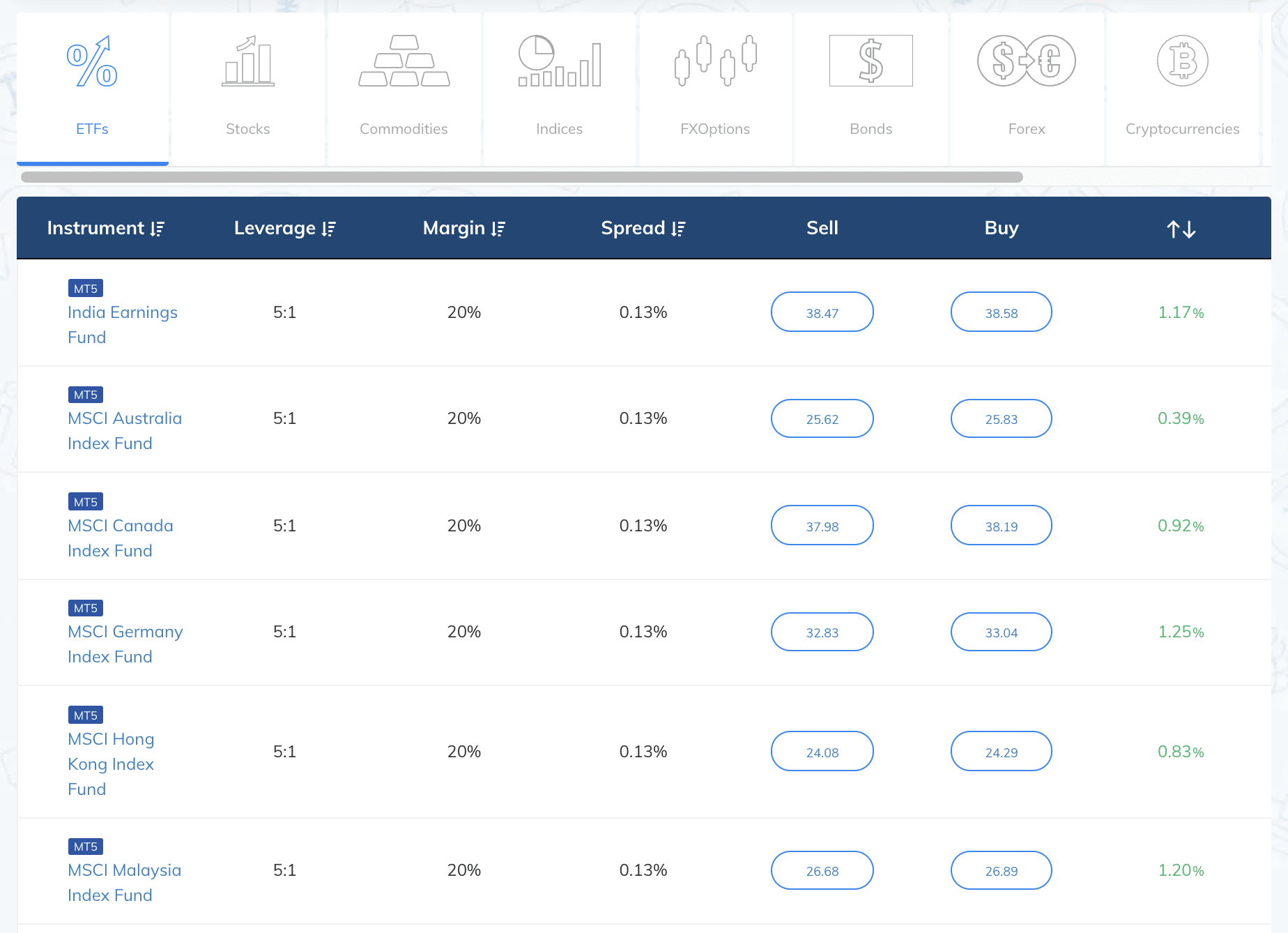
AvaTrade provides two proprietary platforms. AvaOptions is its custom options trading platform. Financial options are complex instruments that concern future prices of assets. They are not suitable for beginners.
AvaSocial is suitable for beginners. AvaSocial is AvaTrade’s mobile-only app for social and copy trading. It is a fun app useful for picking up new ideas and getting the hang of investing.
AvaTrade is regulated by The Central Bank of Ireland, CySEC, ASIC, the FSA, the FSCA, the FSRA, the ISA and the FSC.
A spread fee of 0.13% applies to all AvaTrade ETF trades. A small overnight fee also applies to ETF positions.
| Fee Type | Fee Amount |
| Commission Fee | NA |
| Deposit Fee | $0 |
| Withdrawal Fee | $0 |
| Inactivity Fee | $50 per quarter after 3 months inactivity |
| ETF Fee | A spread fee of 0.13% |
Pros
Cons
71% of retail investor accounts lose money when trading CFDs with this provider.

Capital.com is a regulated CFD broker that welcomes Australian clients. Capital.com opened an office in Melbourne, Australia in September 2021. AUD is accepted, and a selection of 100+ ETFs is provided to trade via CFDs.
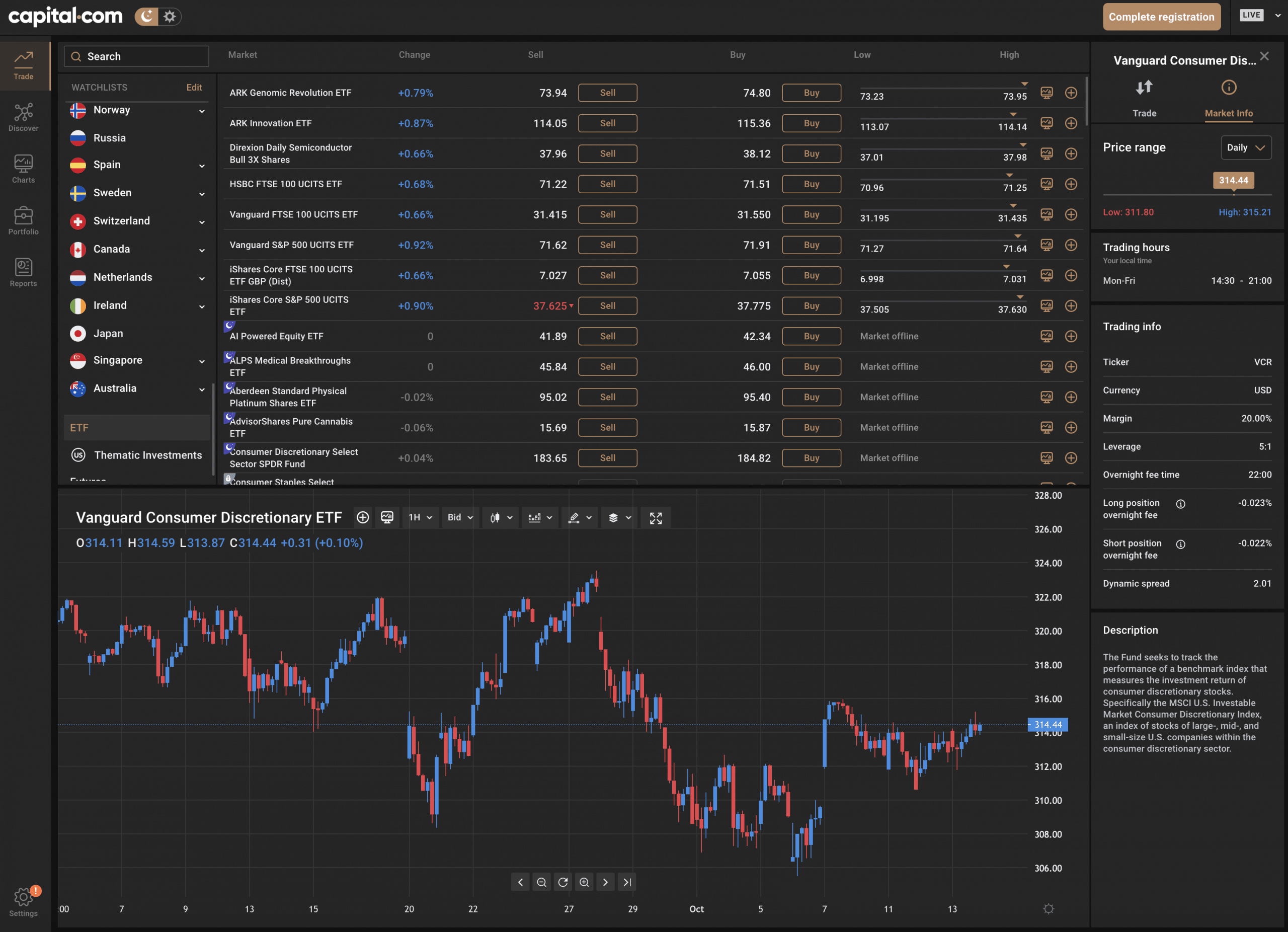
As with AvaTrade, Capital.com offers the powerful benefits of CFD trading as standard. This means you can leverage trades and go short. But it does mean that leveraging is built into trading. Beginners might find eToro a little less intimidating as they start their investing journey.
Capital.com offers100+ ETFs. A good spread of ETFs is provided, with no less than 6 clean energy ETFs, for example, as well as heaps of sovereign index and sector ETFs. Spread fees differ by ETF, as you can see from the image below.
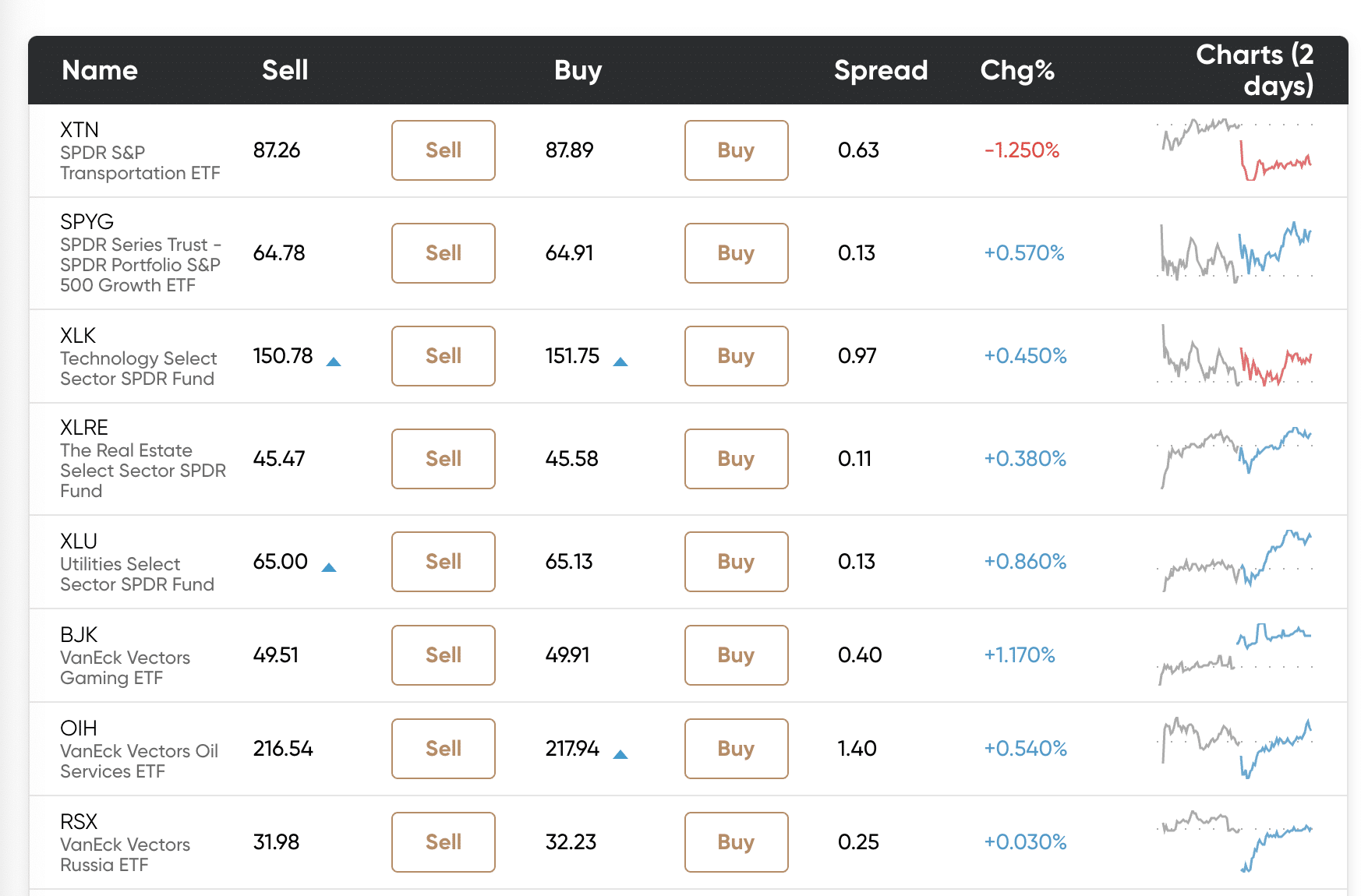
Capital.com offers plenty of products for the new investor to explore as well as its own Help app called Investmate.
Capital.com is regulated by the UK’s Financial Conduct Authority (FCA), the Australian Securities and Investments Commission (ASIC), and the Cyprus Security and Exchange Commission (CySEC).
Note that, as with AvaTrade, tiny overnight fees apply to all CFD positions.
| Fee Type | Fee Amount |
| Commission Fee | 0% |
| Deposit Fee | $0 |
| Withdrawal Fee | $0 |
| Inactivity Fee | $0 |
| ETF fee | spread fee: varies depending on ETF |
Pros
Cons
77% of retail investor accounts lose money when trading CFDs with this provider.
| Broker | ETF Fee | Deposit Fee | Withdrawal Fee | Inactivity Fee |
| eToro | 0.09% spread fee on CFD ETFs | $0 | $5 | $10 monthly (after 12 months inactivity) |
| AvaTrade | 0.13% spread fee on all ETF positions | $0 | $0 | $50 per quarter after 3 months inactivity |
| Capital.com | Variable spread fee on all ETF positions | $0 | $0 | NA |
An ETF is an Exchange Traded Fund. ETFs are like mutual funds in that investment is pooled from many investors and then invested on their behalf. ETFs are unlike mutual funds in that 98% of them are passively-managed and therefore much cheaper to run. Most ETFs are set up to track an existing index: either a stock market index like the FTSE 100, or a sector index like the real estate FTSE EPRA/NAREIT Global REIT Index (which is tracked by the iShares Global REIT ETF)0. The more actively-managed an ETF is, the higher you can expect its expense ratio to be.
With CFD trading, you can leverage your ETF investment and make quick gains (as well as losses!) from small movements in ETF prices. Beginners might be better advised to buy into ETF stock and hold for the long-term. ETFs are very liquid, which distinguishes them from mutual funds and means you can hop in and out of positions easily.
ETFs are set up to offer low-risk investing. They achieve this by investing in many stocks at once.
Like all assets, though, ETFs offer investment risks. If a particular sector takes a hit for any reason, you can expect the value of related ETFs to take a hit too. But if individual companies come a cropper, the inherent diversification of the ETF model should give you some protection.
Note that there are leveraged ETFs which use debt to leverage their investment. Losses can mount up quickly with this type of ETF, which make them unsuitable for beginners. Stick with a conventional tracker ETF that follows a sovereign stock market index for the safest way to invest in ETFs.
Here’s your four-step strategy to invest in an ETF with eToro from Australia:
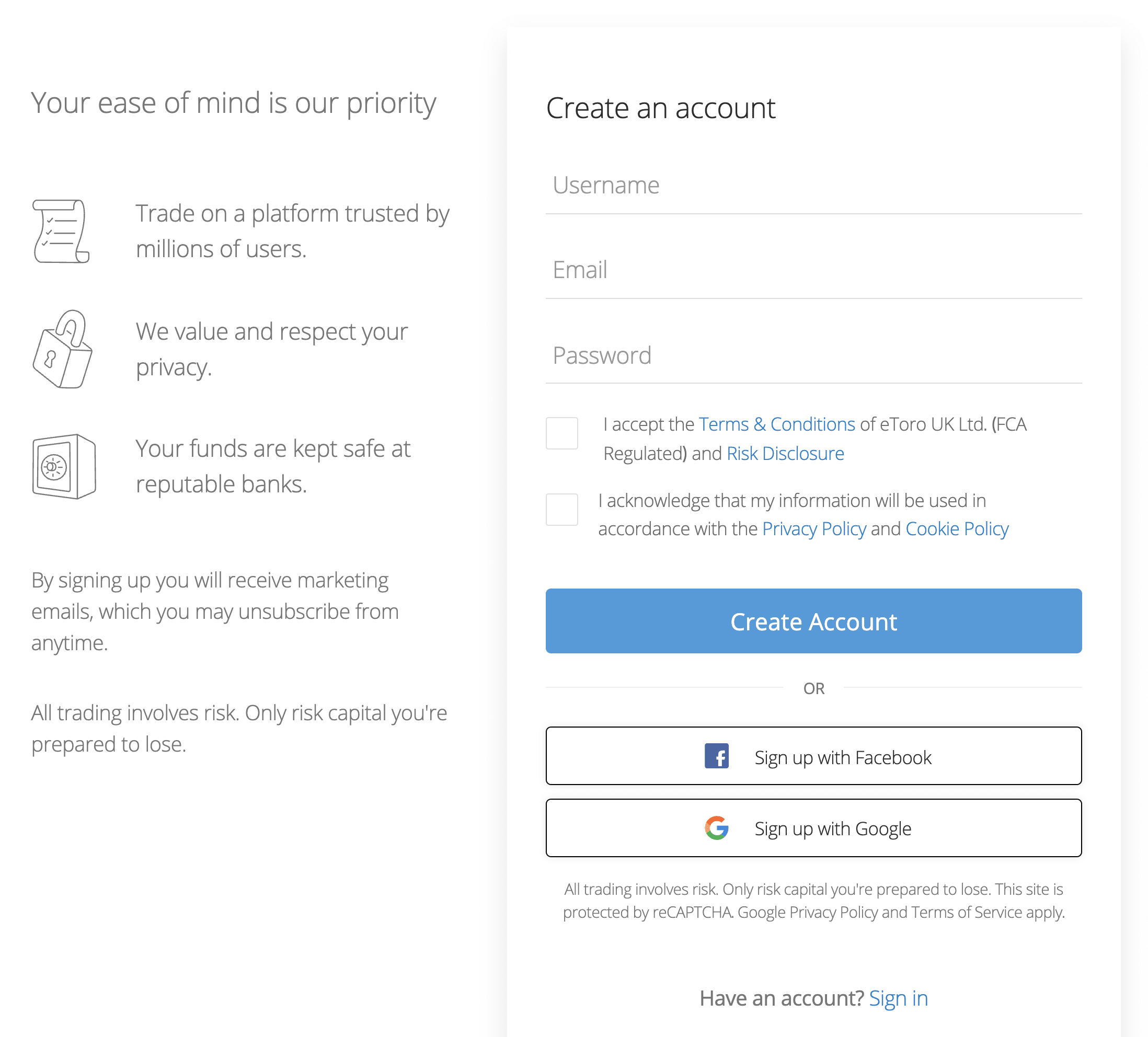
67% of retail investor accounts lose money when trading CFDs with this provider.
Verification is part of modern KYC (Know Your Customer) protocols. Expect it from any reputable broker. You will need to upload personal photo ID as well as proof of address. eToro’s verification procedure is designed to be simple. Use a scan of your passport – checking it has not expired! – for quickest verification.
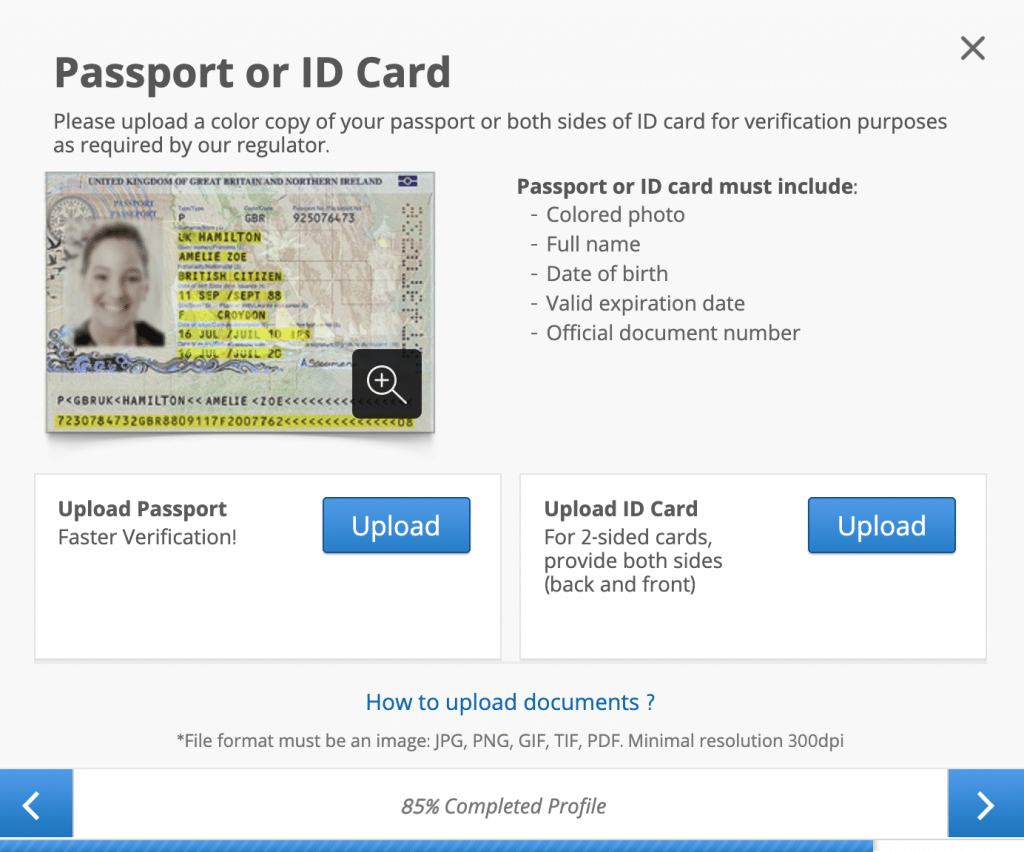
For Proof of Address, you can use a scan of your phone/internet/council tax/water/ electricity/gas bill, your bank/credit card statement, a letter from your council/municipality, or a tax bill/letter.
Once you are verified you will be notified by email, and you are clear to deposit funds.
Inside your eToro account, press the ‘Deposit Funds’ button at the bottom left of the user interface. You can then deposit AUD choosing your preferred method of payment. Note that, when you come to withdraw funds, eToro will use the same method you used to deposit them. So plan ahead.
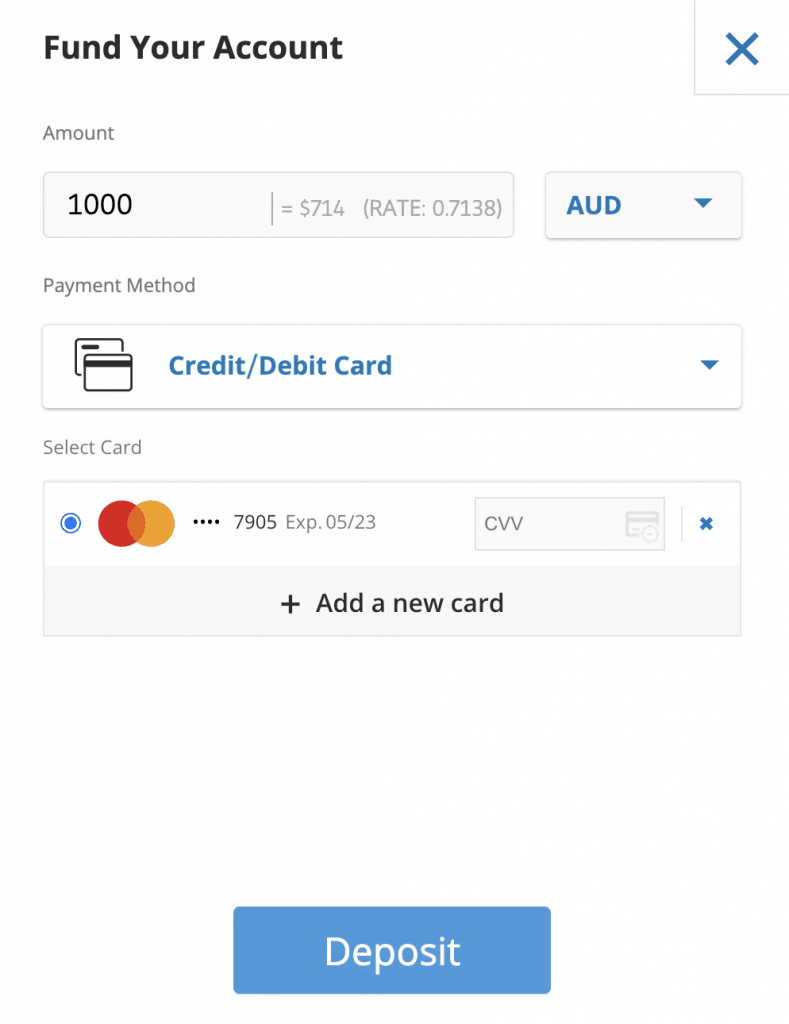
To check out eToro’s ETF options, press the ‘Discover’ button on your left toolbar. Then select ‘ETFs’ from the menu bar that comes up.

Next you will see a list of all 250+ eToro ETFs.

Click on an ETF logo or name to go to its homepage where you can drill down to some more details.
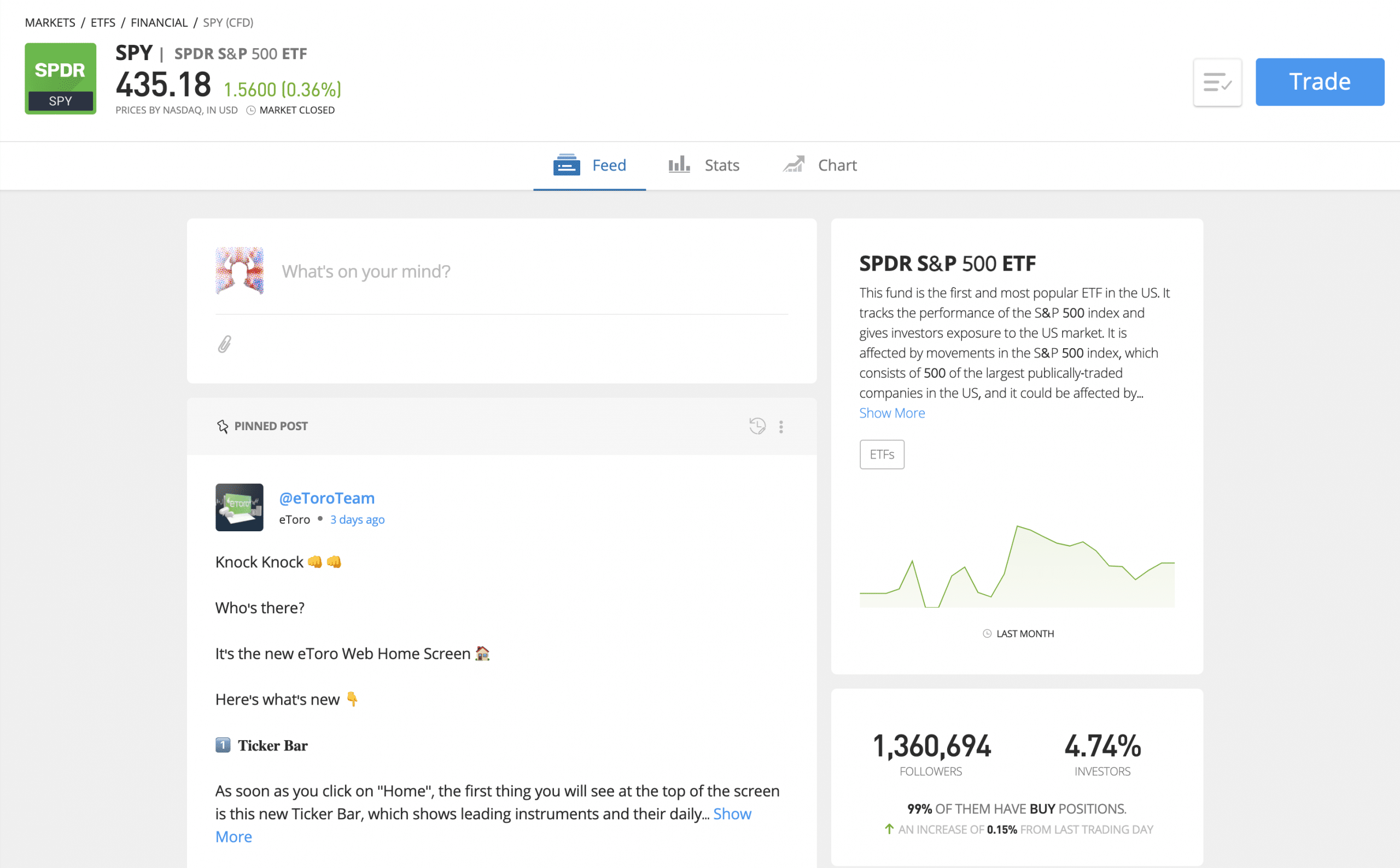
To check out your trading options, press the blue ‘Trade’ button in the top-right corner.

With 250+ ETFs and a commitment to beginner-friendly investing, eToro is a great choice for beginners looking to invest in ETFs.
For Australian investors, eToro is well set-up. The broker takes AUD and is regulated in Australia by ASIC.
For more advanced beginners, both AvaTrade and Capital.com offer powerful CFD options for ETF trading as standard. But neither match eToro for the sheer choice of ETFs available, nor the friendly feel of eToro’s interface. eToro offers plenty more for beginners too with its CopyTrader and CopyPortfolio facilities, and is always developing new ways to offer online investment.